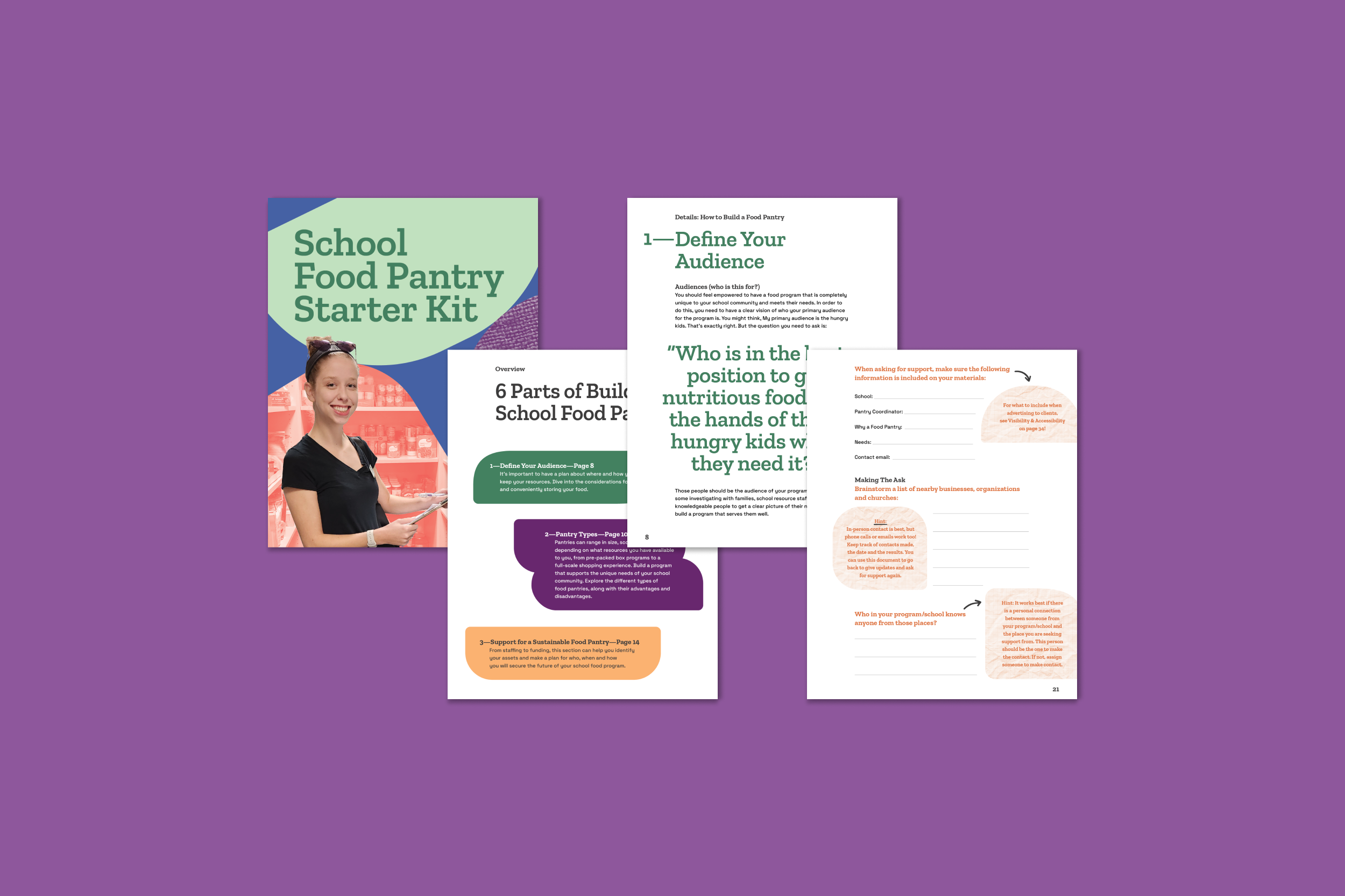
School Food Pantry Toolkit

Toolkit for School Food Pantries: A coalition of food-security nonprofits needed a clear, actionable toolkit to help schools launch and sustain food pantries. Past efforts had failed due to scattered resources and inconsistent guidance.
I was brought onto the project by a design strategist to co-lead content architecture, and lead visual design, and production, translating a large volume of raw material into a structured, on-brand, and usable resource.
Client: A coalition of food-security focused orgs in Eugene, OR
Role: Graphic Design (lead), Content Strategy (supporting)
Team: Design Strategist (lead), Nonprofit Coalition Stakeholders
Design Strategy: Laying a Foundation
I supported the design strategist in facilitating an initial workshop that aligned stakeholders, defined the toolkit’s purpose, and built consensus on structure and priorities.
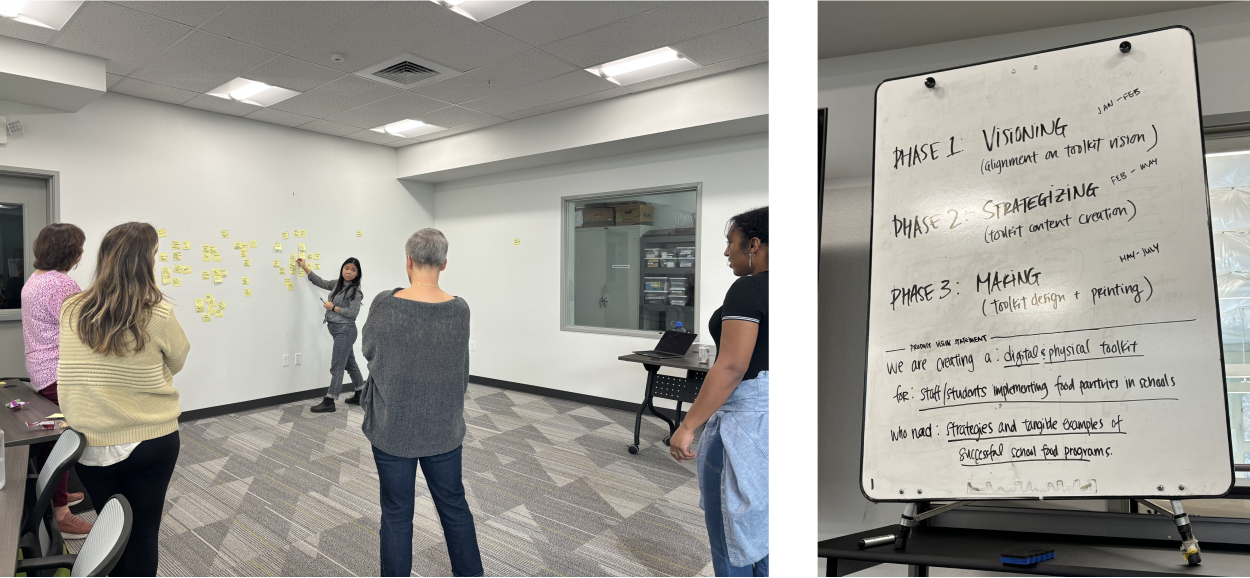
At the end of the workshop the design strategist worked with the stakeholders to create a product vision statement:
“We are creating a toolkit for staff and students implementing food pantries in schools who need strategies and tangible examples of successful school food programs.”
This statement became the anchor for content organization and visual design decisions.
Client Feedback:
“Everyone was pretty stoked about how much we accomplished today and that you were able to help lay the foundation for the work ahead. It feels real, it feels possible and it feels like the end product is going to be everything and more than we dared to imagine.”
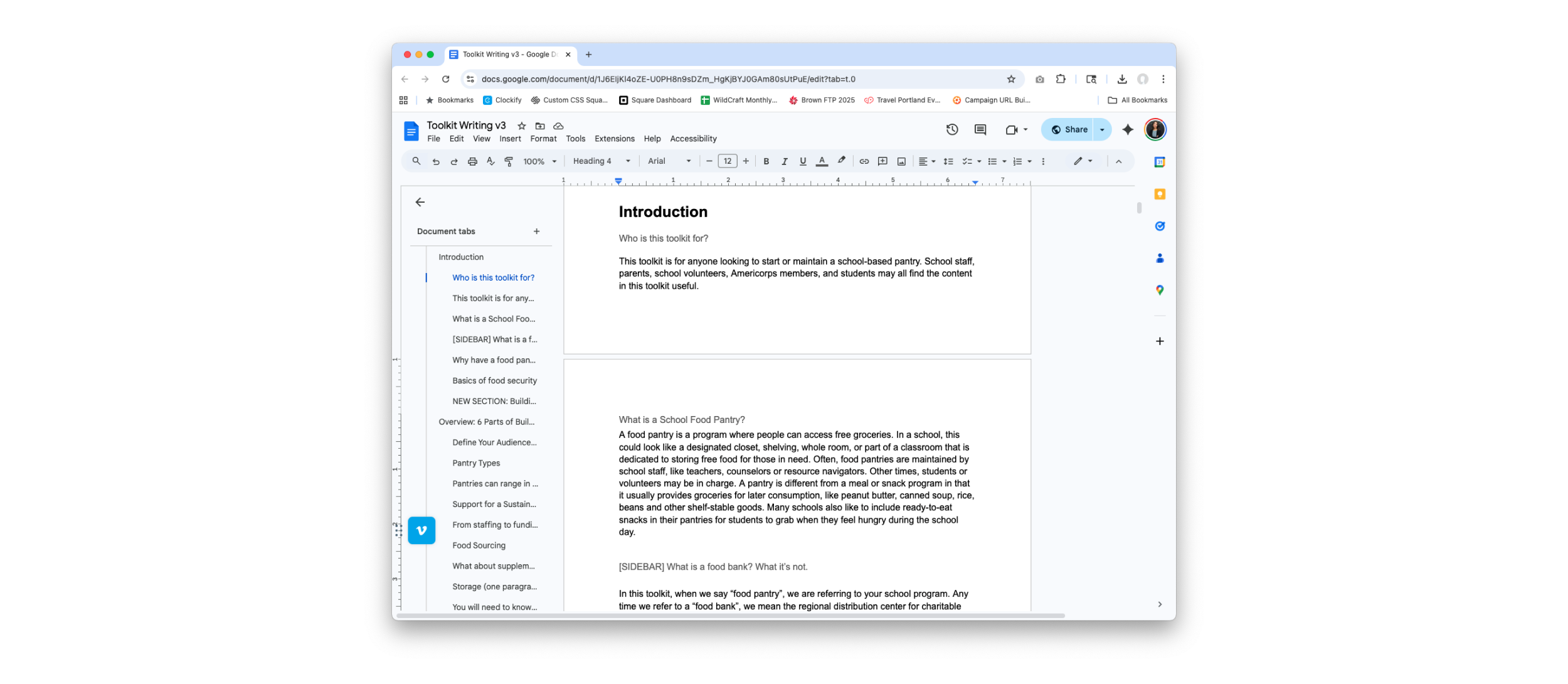
Content Development & Peer Feedback
After the workshop, the design strategist translated our shared decisions into a detailed content outline. The client team then spent several weeks writing into that outline — capturing stories, guidance, and resources for each topic area. A finished draft was submitted to a group of peers in schools and related orgs for user feedback. Insights from this feedback—such as including additional suggestions for avenues of promotion and fundraising, and recommendations about accessibility for non native english speakers—were incorporated before we moved into the design phase.
Content Architecture
With the draft content completed we entered the design phase of the project. I approached the content as a system: diagramming the flow, mapping relationships between sections, and spotting redundancies and gaps. Based on this map, I proposed structural refinements — re-grouping sections, moving supporting material into sidebars, and introducing new modules where context was missing. For each change, I provided suggested titles and example content to guide the client. The resulting content framework was both clearer and more actionable as we moved into visual design.
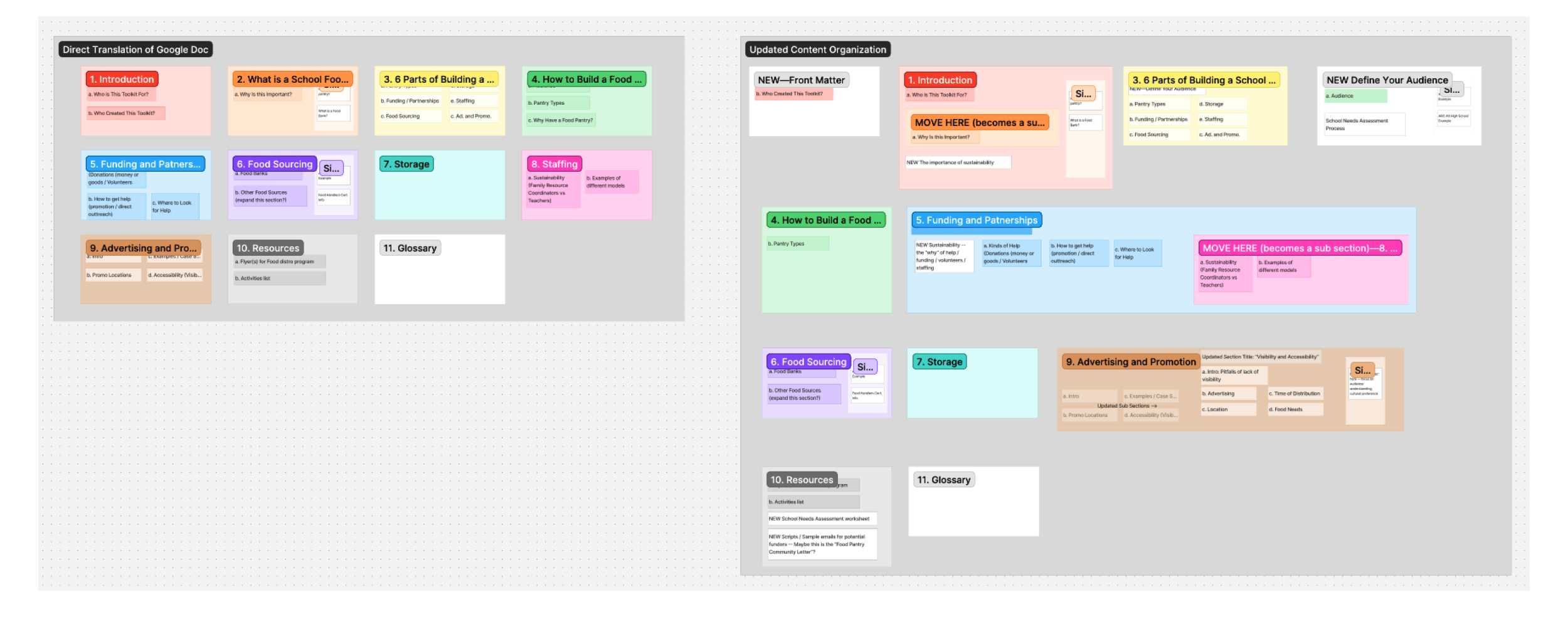
Building a Visual Language
Budgetary constraints limited the final product to a booklet style publication. After a review of similar toolkit projects, I produced an initial set of design directions, using a mock cover design as a way to broadly express typographic and illustrative choices.
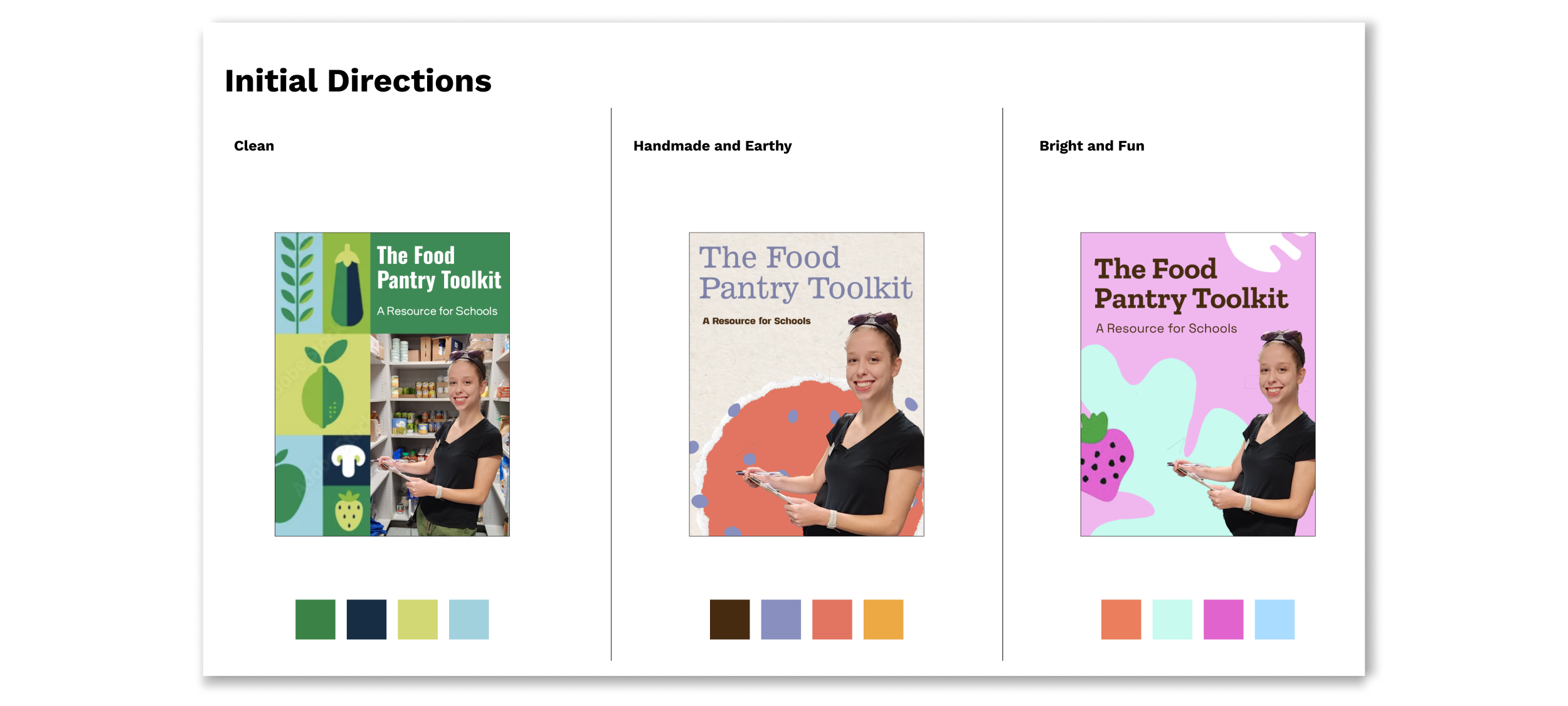
In presenting these directions I realized that the clients were unsure of how to make decisions regarding design. I took a step back and produced a deck giving them a framework to think about the choices in. I focused on collage inspired directions which would allow us to work with images of varying quality successfully. I tied the visual research in the deck back to our findings in the initial workshop.
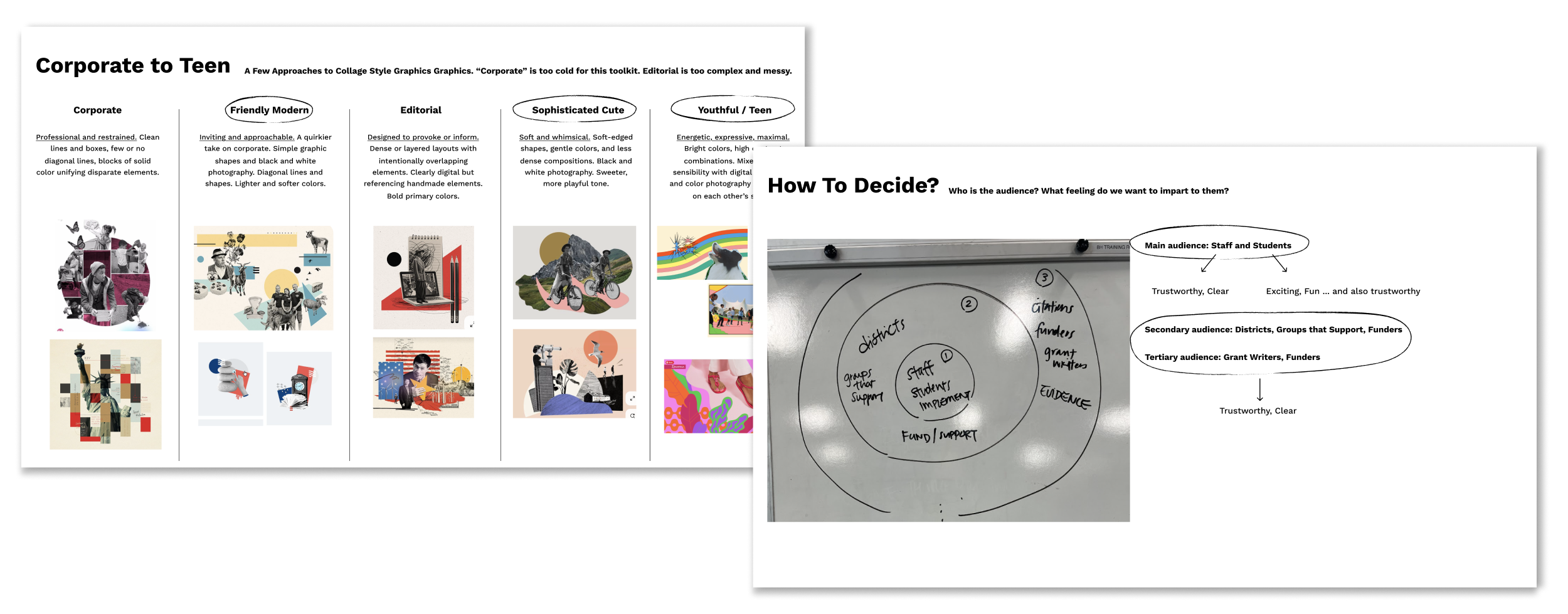
Armed with an understanding of how visual choices supported engagment with different audiences, the School Food Coalition decided on a sophisticated collage based direction that would appeal to both adult and teen stakeholders. After a few rounds of revision we landed on a food inspired palette.
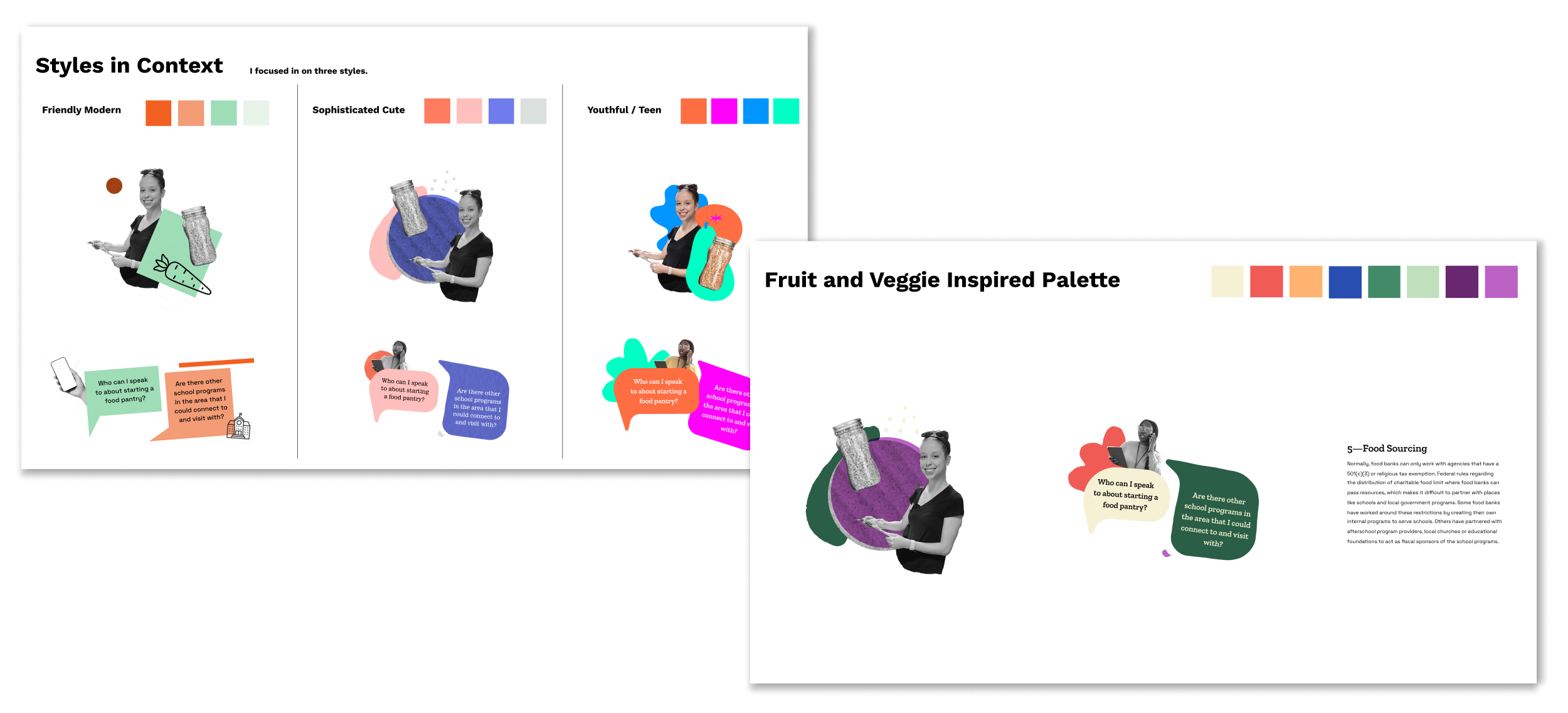
Once we had locked in on a visual language I was able to develop a system of elements to streamline the toolkit, including section openers, sidebars, illustrative lists, and graphic collage elements.
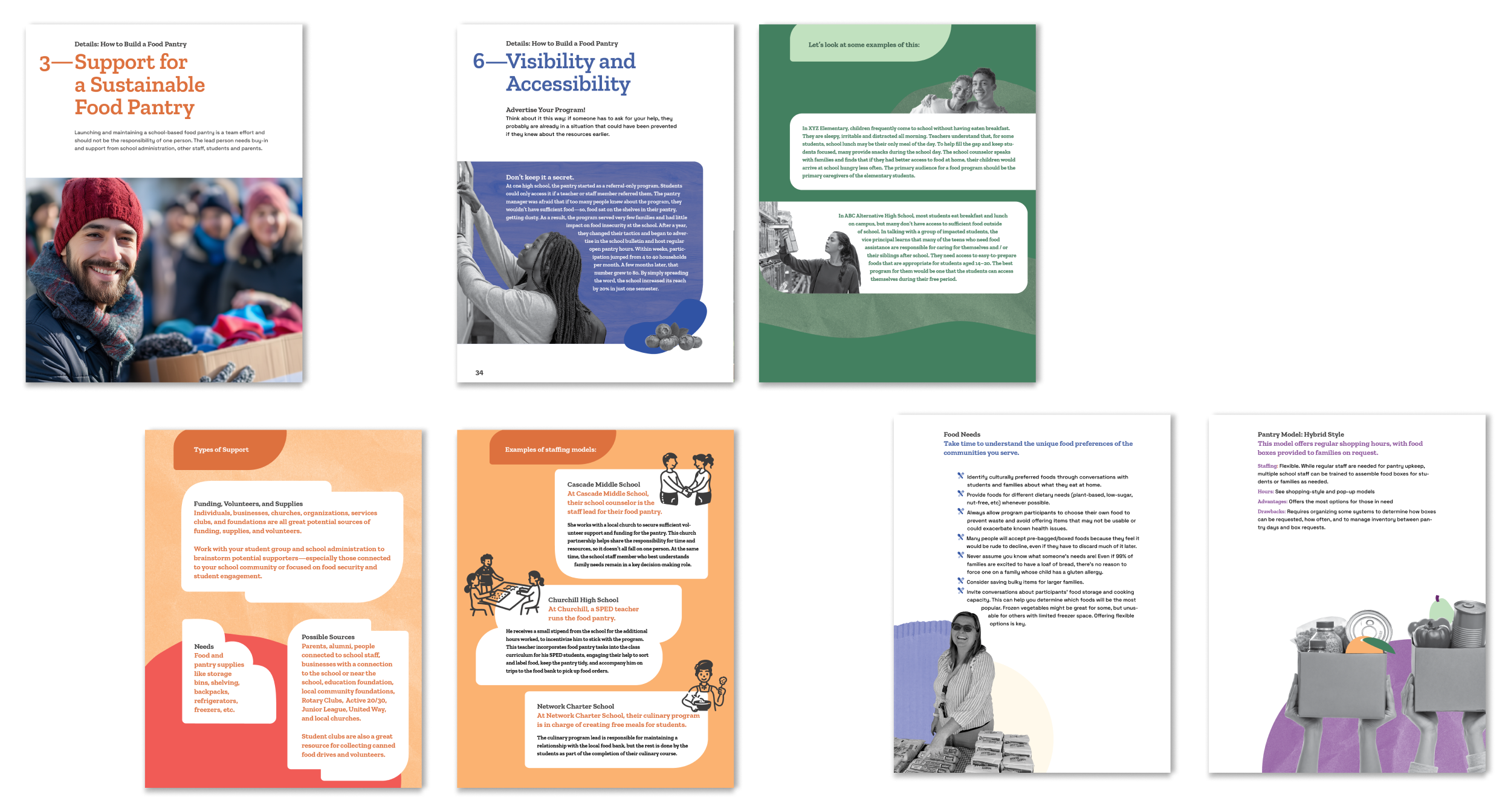
Production
The project is currently in production. We are printing on uncoated paper to support using the booklet directly as a work book, and using a wire-o binding which will allow for easy photocopying of pages, be durable when passed between multiple hands, and reinforces the workbook nature of the resource.
Outcomes
This project is currently in production. I look forward to receiving feedback once it is in use.
Client Feedback
“I am not exaggerating when I say... I have no words to describe how excited, appreciative and blown away by the final version of the toolkit. You took our very muddy and scattered vision and created something that is much more than I could have ever imagined.”
“I LOVE this and cannot wait for the rest of our group to see the final product. Kate - you are a master at taking our vision and making it a reality. Honestly, it is better than I imagined it could be. Thank you!”
